Description – Ebola virus disease
Ebola Virus Disease (EVD) is a highly contagious infection caused by one of five virus species belonging to the Filoviridae family believed to be carried by fruit bats. The Zaïre, Sudan, Taï Forest, and Bundibugyo viruses cause illness in humans while the Reston species affects animals.
It is still unclear how the virus originated or how it lives in the natural environment, but it is believed to be a zoonosis (an animal disease that can spread to humans). Fruit bats are the suspected natural hosts that transmit the virus to other animals such as gorillas, chimpanzees, or monkeys. If a person comes into close contact with infected wildlife, they can spread the infection to other humans.
Person to person transmission occurs when coming into contact with the blood, organs, and bodily fluids of infected persons or cadavers without proper infection control gear (like masks, gloves, and gowns). Transmission can also occur when coming into direct contact with contaminated surfaces and materials such as clothing, unsterilized medical instruments, and infected blood products. So far, scientists have not been able to prove that the infection spreads among humans through air particles by sneezing or coughing.
More evidence is needed on the risks of sexual transmission, but all Ebola survivors should practice safe sex for at least 12 months. Due to confirmed cases of male-to-female sexual transmission, men should have their semen tested at least twice to confirm that the virus is no longer active in the body before having sexual intercourse. Humans are infectious as long as their blood contains the virus.
History of Ebola Virus Disease
Ebola virus disease (EVD) is a severe disease caused by the Ebola virus, a member of the filovirus family, which occurs in humans and other primates. The disease emerged in 1976 in almost simultaneous outbreaks in the Democratic Republic of the Congo (DRC) and Sudan (now South Sudan).
Between 1979 and 1994 no cases or outbreaks were detected, however since that time outbreaks have been recognized with increasing frequency (see table below).
The largest outbreak to date took place in West Africa between March 2014 and June 2016, affecting primarily Guinea, Liberia and Sierra Leone. A small and unrelated outbreak was confirmed in the Democratic Republic of Congo in August 2014. The most recent outbreak was also in the Democratic Republic of Congo, in 2017.
There are 6 species of Ebola virus, 4 of which have caused disease in humans:
- Zaïre ebolavirus (EBOV)
- Sudan ebolavirus (SUDV)
- Tai Forest (TAFV) (formerly known as Ebola-Ivory Coast)
- Bundibugyo ebolavirus (BDBV)
How EVD gets transmitted?
Transmission of Ebola between humans can occur through:
- Direct contact through broken skin and mucous membranes with the blood, secretions, organs, or other body fluids of infected people.
- Indirect contact with environments contaminated with such fluids.
- Exposure to contaminated objects, such as needles.
- Burial ceremonies in which mourners have direct contact with the body of the deceased.
- Exposure to the semen of people with Ebola or who have recovered from the disease – the virus can still be transmitted through semen for up to 7 weeks after recovery from illness.
- Contact with patients with suspected or confirmed EVD – healthcare workers have frequently been infected while treating patients.
Risk factors of Ebola Virus Disease
People who are living in or traveling to affected areas of Africa may be at risk of infection.
The risk of infection with Ebola is extremely low, unless there has been direct exposure to the blood or bodily fluids of an infected person or animal, alive or dead, including unprotected sexual contact with people who have had a diagnosis of Ebola confirmed, up to three months after they have recovered.
If you are traveling in an affected country and you feel unwell, seek immediate medical attention.
If you have returned from travel in an affected country and you feel unwell, seek immediate medical assistance and tell your doctor where you have been, or mention if you know that you have been in contact with someone who has had Ebola.
Causes of Ebola Virus Disease
The exact cause of EVD is unknown. Scientists believe that it is animal-borne and most likely comes from bats, which transmit the Ebola virus to other animals and humans. There is no proof that mosquitos or other insects can transmit the virus. Once infected, a person can spread the virus to other people.
The Ebola virus is not as contagious as common viruses, such as colds or the flu. It is not spread through air, water, or food. The Ebola virus is spread through direct contact with:
- Blood of a person infected with the virus.
- Body fluids, such as breast milk, stool, saliva, semen, sweat, urine, or vomit, of a person infected with the virus.
- Objects, such as needles or syringes that are contaminated with the virus.
- Animals, such as bats and primates that are infected with the virus.
Direct contact means that a person’s eye, mouth, nose, or broken skin touches contaminated blood, fluids, or an object. Broken skin may be a cut, scratch, scrape, or open wound.
Symptoms of EVD
The incubation period, that is, the time interval from infection with the virus to onset of symptoms is from 2 to 21 days. A person infected with Ebola cannot spread the disease until they develop symptoms.
Symptoms of EVD can be sudden and include:
- Fever
- Fatigue
- Muscle pain
- Headache
- Sore throat
This is followed by:
- Vomiting
- Diarrhea
- Rash
- Symptoms of impaired kidney and liver function
- In some cases, both internal and external bleeding (for example, oozing from the gums, or blood in the stools).
- Laboratory findings include low white blood cell and platelet counts and elevated liver enzymes.
EVD complications
- Ebola virus disease is a fatal illness with a survival rate of only 10%-50%.
- As the illness progresses, it can cause the failure of multiple organs (such as the lung, kidney, and liver), severe bleeding inside and outside the body, jaundice, seizures, coma, and shock (low blood pressure).
- Researchers do not understand why some people survive and others do not. For those who do survive, recovery can be slow. They may develop inflammation of the eyes (uveitis), liver (hepatitis), or testicles (orchitis), as well as symptoms like fatigue, weakness, chronic joint pains, or headaches.
Diagnosis and test
Diagnosing Ebola may be challenging because the early symptoms, such as fever, red eyes, and a skin rash, are not specific to Ebola infection and are seen often in patients with more commonly occurring diseases. Confirmation that symptoms are caused by Ebola virus infection are made using the following investigations:
- Antibody-capture enzyme-linked immunosorbent assay (ELISA)
- Antigen-capture detection tests
- Serum neutralization test
- Reverse transcriptase polymerase chain reaction (RT-PCR) assay
- Electron microscopy
- Virus isolation by cell culture.
Samples from patients are an extreme biohazard risk; laboratory testing on non-inactivated samples should be conducted under maximum biological containment conditions.
Treatment and medications
For the treatment of Ebola virus disease, there is no Food and drug administration(FDA) approved treatment or vaccine available. The treatment focuses on treating the symptoms and complications as they appear. The following supportive treatment is given to the patient:
- Maintaining oxygen levels
- Normalizing blood pressure
- Treating concurrent infections
- Administering IV fluids and electrolytes
Good supportive treatment is essential as it increases the survival rate. Recovery of the individual also depends on the supportive treatment and immune system of the individual.
Prevention of EVD
The Ebola outbreak in West Africa is now over. The risk of catching the infection while traveling to previously affected countries is very small.
But if you’re visiting one of these areas, it’s still a good idea to follow these simple precautions to minimize your risk of picking up potentially serious infections:
- Wash your hands frequently using soap and water – use alcohol hand rubs when soap isn’t available
- Make sure fruit and vegetables are properly washed and peeled before you eat them
- Avoid physical contact with anyone who has possible symptoms of an infection
- Don’t handle dead animals or their raw meat
- Don’t eat “bushmeat”
 Diseases Treatments Dictionary This is complete solution to read all diseases treatments Which covers Prevention, Causes, Symptoms, Medical Terms, Drugs, Prescription, Natural Remedies with cures and Treatments. Most of the common diseases were listed in names, split with categories.
Diseases Treatments Dictionary This is complete solution to read all diseases treatments Which covers Prevention, Causes, Symptoms, Medical Terms, Drugs, Prescription, Natural Remedies with cures and Treatments. Most of the common diseases were listed in names, split with categories.

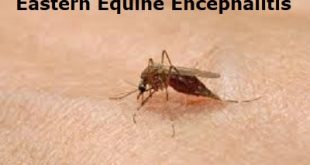
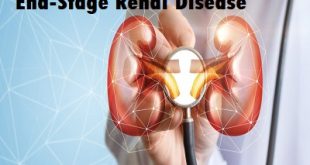
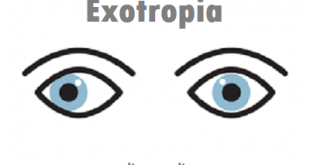

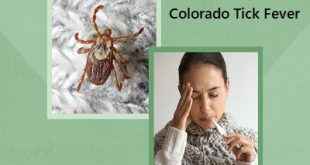
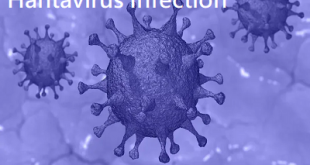

May those people who hunt kill and eat wild animals like mokeys stop.
it could be better to go for early treatment if found with Ebola
Regular medical check up
More Greece to your elbow, with application like this, public health knowledge will increase and the risk of spread of the infectious disease in the world will reduced.
I want to plead that more efforts should be input in discovered of the drugs that will managed this deathly virus. thank you, God bless the organization.
prevention is better than cure,African Governments need to invest in this field to fight the outbreak and spread of the disease…furthermore,supporting the doctors and other health workers especially in this field.not forgetting of research centres
I would to know how to protect thats it.
please read it in the prevention section of the article.
Serious control is needed at border crossing points. There are some routes across the borders that are never in check up.
Very helpful because I never knew anything concerning the EVD thank you
is there vaccine for Ebola, its name and period of protection it lasts.
Ebola vaccines are a number of vaccines to prevent Ebola that is either approved or in development. The first vaccine to be approved in the United States was rVSV-ZEBOV in December 2019. It had been used extensively in 2018–19 under a compassionate use protocol.